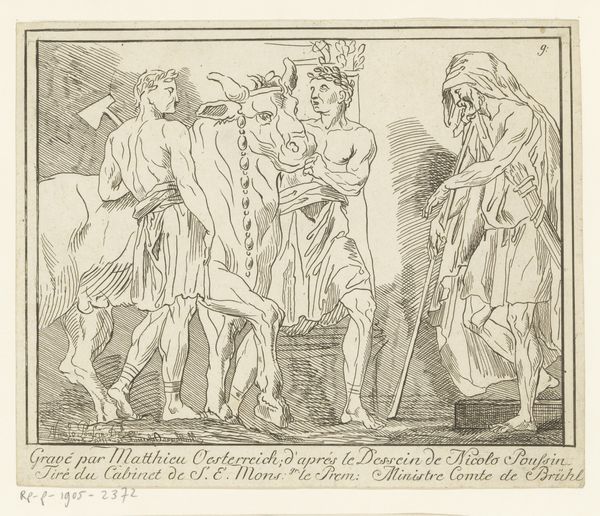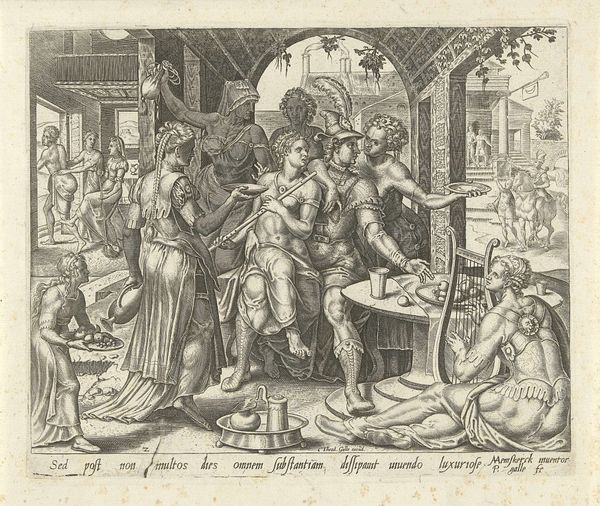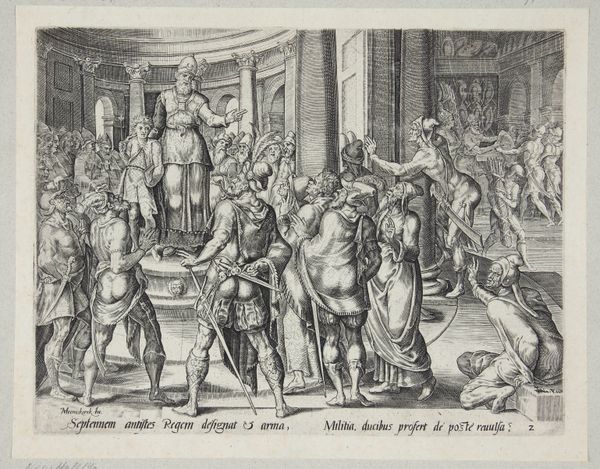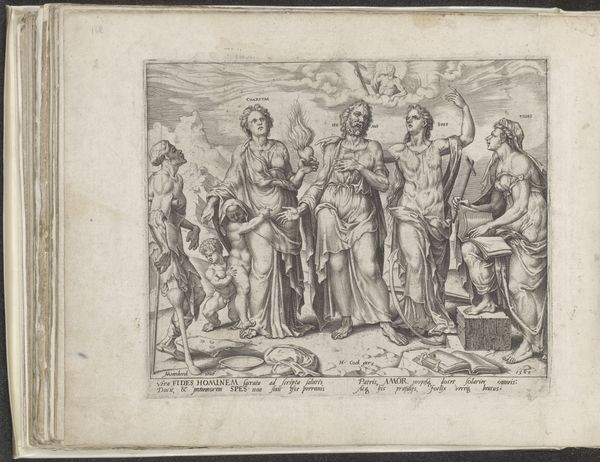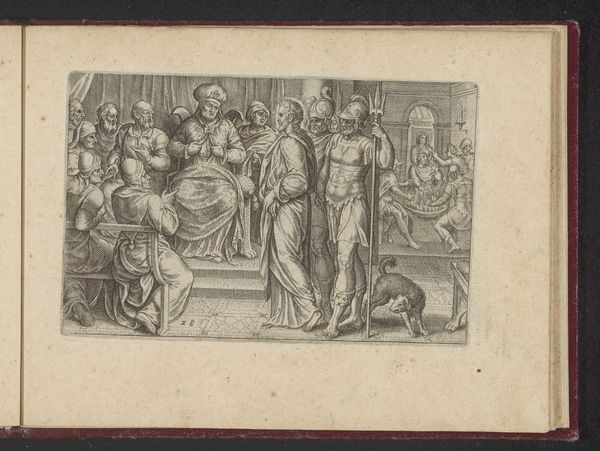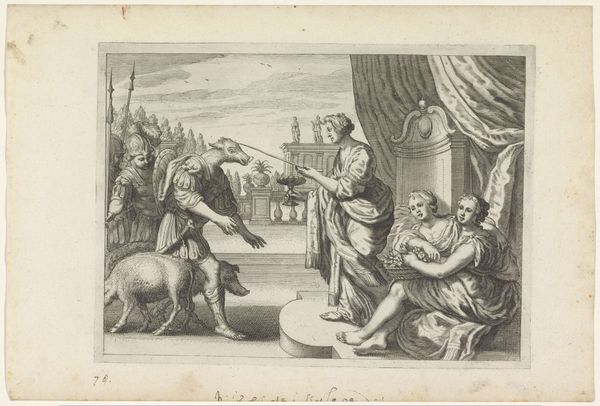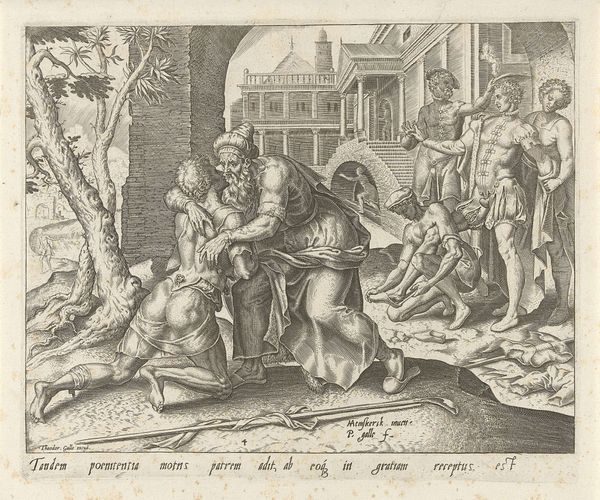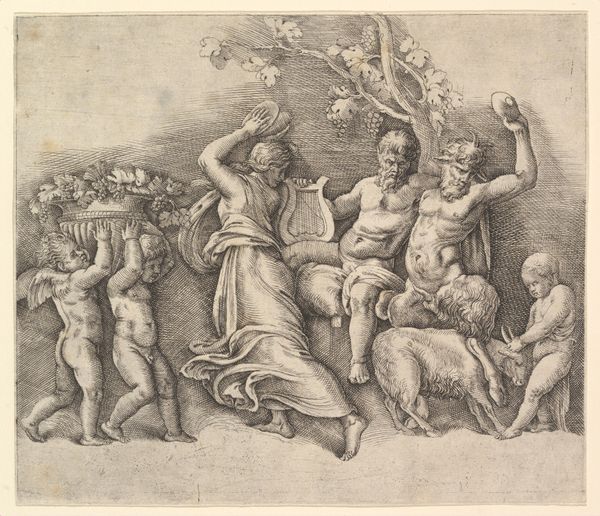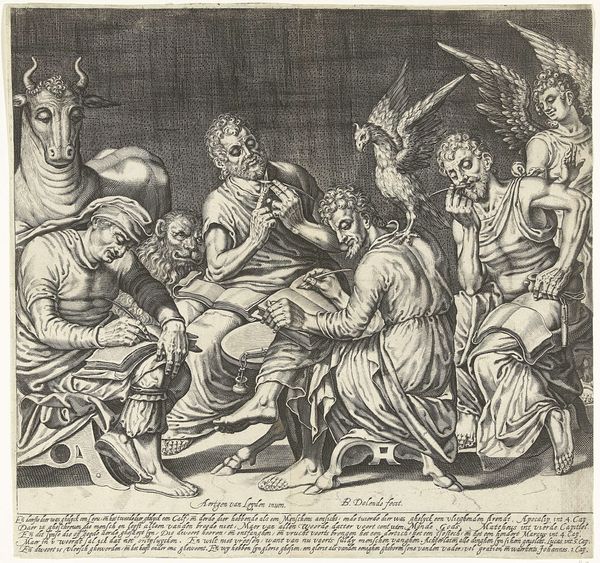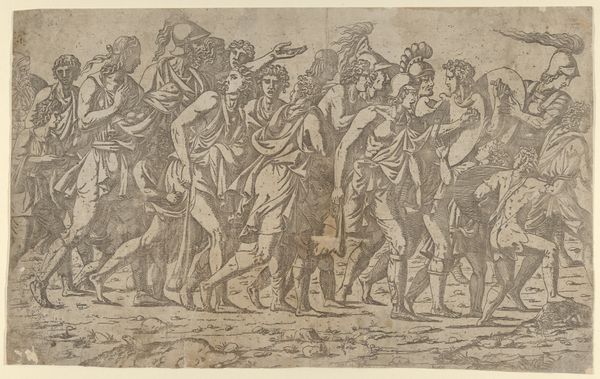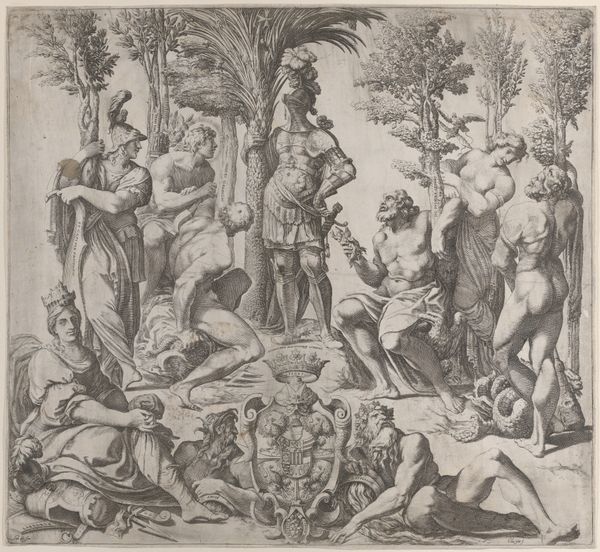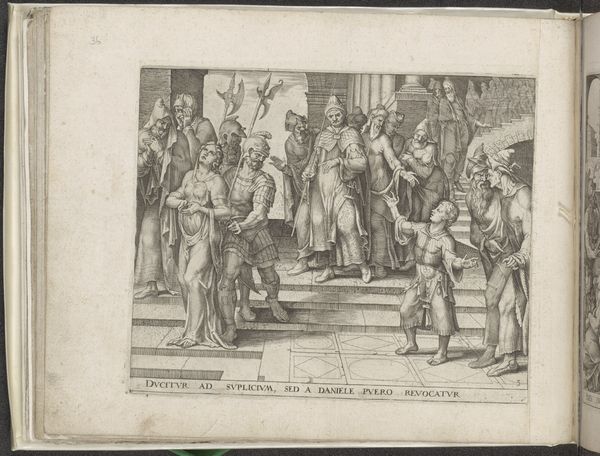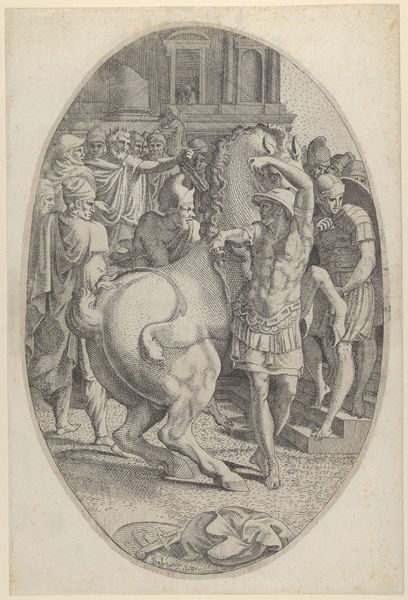
Speculum Romanae Magnificentiae: Sacrifice on the Campus Martius 1530 - 1580
0:00
0:00
drawing, print, engraving
#
drawing
#
allegory
# print
#
landscape
#
figuration
#
geometric
#
ancient-mediterranean
#
history-painting
#
italian-renaissance
#
engraving
Dimensions: sheet: 9 5/16 x 15 3/16 in. (23.6 x 38.5 cm)
Copyright: Public Domain
Curator: Welcome to the Met. Today, we're looking at a print titled "Speculum Romanae Magnificentiae: Sacrifice on the Campus Martius," dating from about 1530 to 1580. It’s an engraving, likely intended for wider distribution and study. Editor: It's striking how... stiff everything feels. Everyone is posed so formally, and the animals seem like statues themselves, almost too muscular. The lines of the engraving are very precise and regular. Curator: Well, let's think about the making. Engraving allowed for fairly detailed replication. Look at the textures created. The consistent marks, the line weights, probably suggest a print workshop operating with a skilled artisan at the helm, directing multiple stages in production to standardize the visual. The labor involved speaks to value placed on depicting Roman grandeur. Editor: That’s interesting. The composition centers around sacrifice – the ram, bull, even the pig, and the vestal virgin and attendants – it makes you wonder about the original symbolism and the power of religious rituals. What are we supposed to feel looking at this? Is it reverence, historical curiosity, or something else entirely? It makes me think of processionals in classical art. Curator: I see your point. But note that these prints became commodities in themselves, almost like souvenirs for the educated elite and tourists wanting a piece of the ancient world to bring back to their libraries. It represents a market. The materials – paper, ink, the metal plates – are all transformed by labor and consumed by a particular clientele. Editor: Precisely. The symbols would have meant specific things to educated viewers in the Renaissance. Consider the clothing, the animals. The Campus Martius was not only a physical space, but it symbolized Roman identity and strength. The imagery all builds towards communicating ideas about power, duty, and tradition. This image then revives these cultural values. Curator: And its reuse of these images suggests both how valuable the symbolic and formal traditions were and also a change. By converting this scene of communal sacrifice into an reproducible image, a different and novel access is produced and enjoyed. Editor: Looking at it, the symbols become ways of creating meaning that still affect us, connecting past and present in a palpable way. The act of creating this engraving helped shape cultural memory about Rome. Curator: Exactly. Focusing on its mode of production changes the object that seems suspended between classical ideals and a new Renaissance. Editor: Right. By engaging in symbolism, a conversation begins, continuing the chain of interpreting this image across different temporal landscapes.
Comments
No comments
Be the first to comment and join the conversation on the ultimate creative platform.
